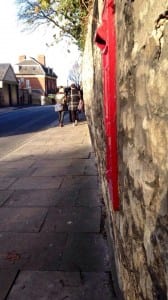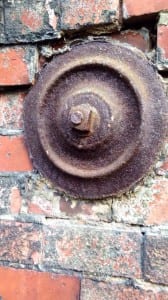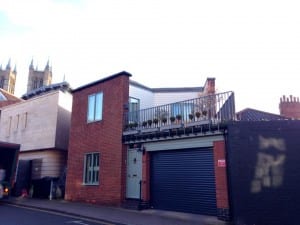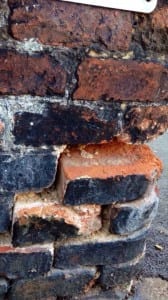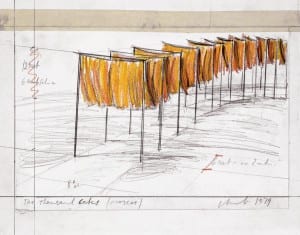Whilst walking around the Cathedral quarters, Castle grounds and the surrounding areas, I discovered a side to Lincoln I never knew before. Wandering off the beaten track, down alleyways and through hidden gardens opened my eyes up to Lincoln’s rich history that I knew existed, but had never witnessed. It was the architecture of the buildings that fascinated me the most. The clear contrast between new builds and old roman remains. However it was the blending of the old and new together that made me reflect on just how far Lincoln had come over time, and I appreciated that little bit Lincoln more. Within Phil Smith’s Mythogeography: A Guide to Walking Sideways, he stated that drifting through a city could allow you ‘to see for the fist time things you already know’ (Smith, 2010, 119). Although it was a guided drift through Lincoln, I certainly saw things that I’d seen before but never appreciated.
Below are some examples of the blending of old and new. The old roman wall which had bowed over the years with a modern postbox slotted inside its historic bricks. Old steal rods to help preserve the wall and to keep it standing throughout time. Crumbling brick walls in contrast to the fancy modern new build in the historic cathedral grounds.
Christo and Jeanne-Claude’s work is something that I find very interesting. The wrapping of everyday objects such as trees, and the walls of oil barrels, allows the public to see everyday sites in a new way. When the sun shines on the trees they take a new form, something mystical that distorts the assumptions of the everyday. Thus the public pause and acknowledge their surroundings. The wall of barrels does a similar thing. They create a block in a path or a wall so high and intimidating it makes the audience feel small. This alteration of journeys and physical perceptions also forces the public to acknowledge and appreciate their surroundings.
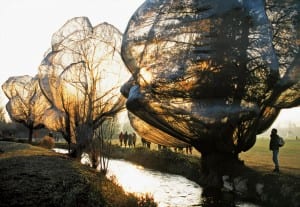
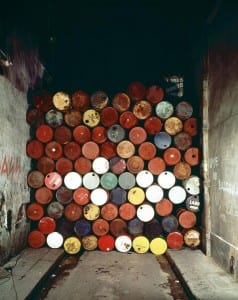
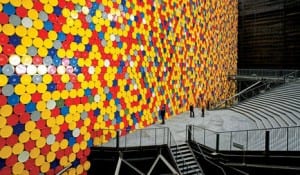
Smith, P. (2010) Mythogeography: A Guide to Walking Sideways. Devon: Axminster Triarchy Press.

